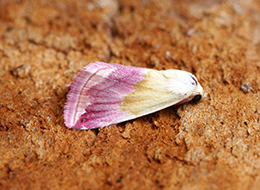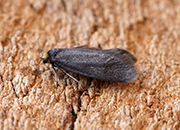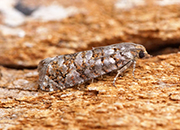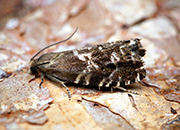 Now is the perfect time to do some moth hunting amongst IVY! yes this plant that particularly favours dead of dying trees should be in full bloom right about now.
Now is the perfect time to do some moth hunting amongst IVY! yes this plant that particularly favours dead of dying trees should be in full bloom right about now.During the day, searching for large Ivy blooms is invaluable and be sure to take particular note of day time activity, as if you find a sweet smelling spot, expect to see a variety of late flying flies, hover-flies, wasps and lacewings.
It is these blooms that will be most prolific come dusk.
Sometimes before it is dark moths will be seen settling on the blooms ready to taste the sweet sticky residue that is emitted.
The best chance of seeing a good amount of moths nectaring is to pick a nice mild overcast night, sadly these nights have been few and far between this year and failing that, any night will probably yield a handful.
The use of a high power torch to search the ivy will reveal moths eyes glistening in the light and this is the best way of finding them.
I always carry a net with me, just in case that vital species is just out of reach! and plenty of pots.
Go on give it a try!
Here are some of the moth species that are attracted to Ivy.
The commonest to be found include.....
Chestnut

Satellite

Green-brindled Crescent

Dark Chestnut

Barred Sallow

The Sallow


The Brick

And slightly less common.....
Beaded Chestnut

Brown-spot Pinion

This is by far not the only moths that will turn up at Ivy, be prepared for the unexpected!
Dusky-lemon Sallow


 Musotima nitidalis
Musotima nitidalis L-album Wainscot
L-album Wainscot Feathered Ranunculus
Feathered Ranunculus Agonopterix nervosa
Agonopterix nervosa Blossom Underwing
Blossom Underwing Beautiful Marbled
Beautiful Marbled Lampronia fuscatella
Lampronia fuscatella Gravitarmata margarotana
Gravitarmata margarotana Perittia obscurepunctella
Perittia obscurepunctella Black-spotted Chestnut
Black-spotted Chestnut Cydia pactolana
Cydia pactolana















































A good bee to look out for on ivy is colletes hederae. A striking bee I had pointed out to me last weekend on Brean Down.
ReplyDeleteNice, although i've not seen the sun much lately to bring anything out!
ReplyDelete